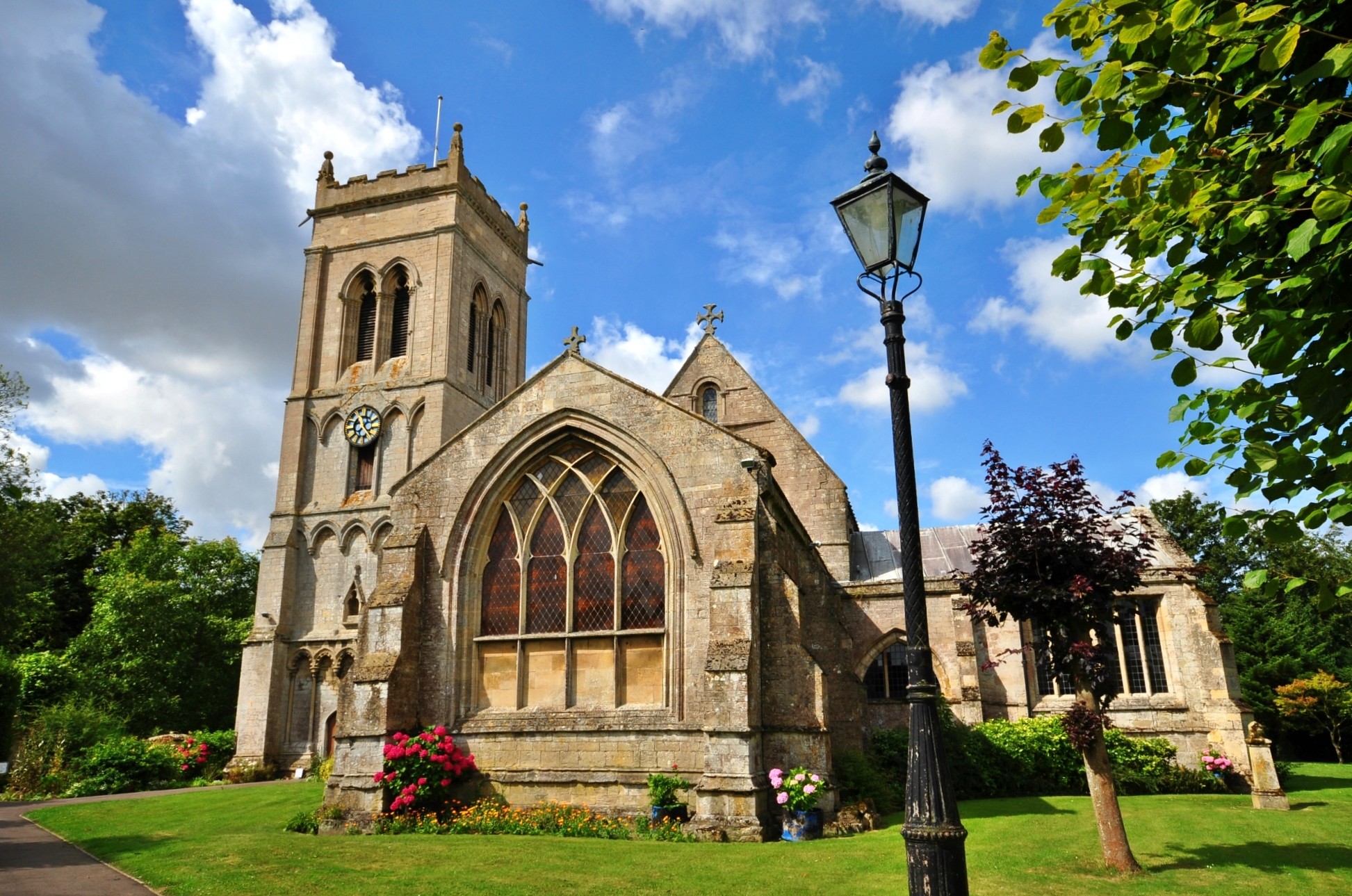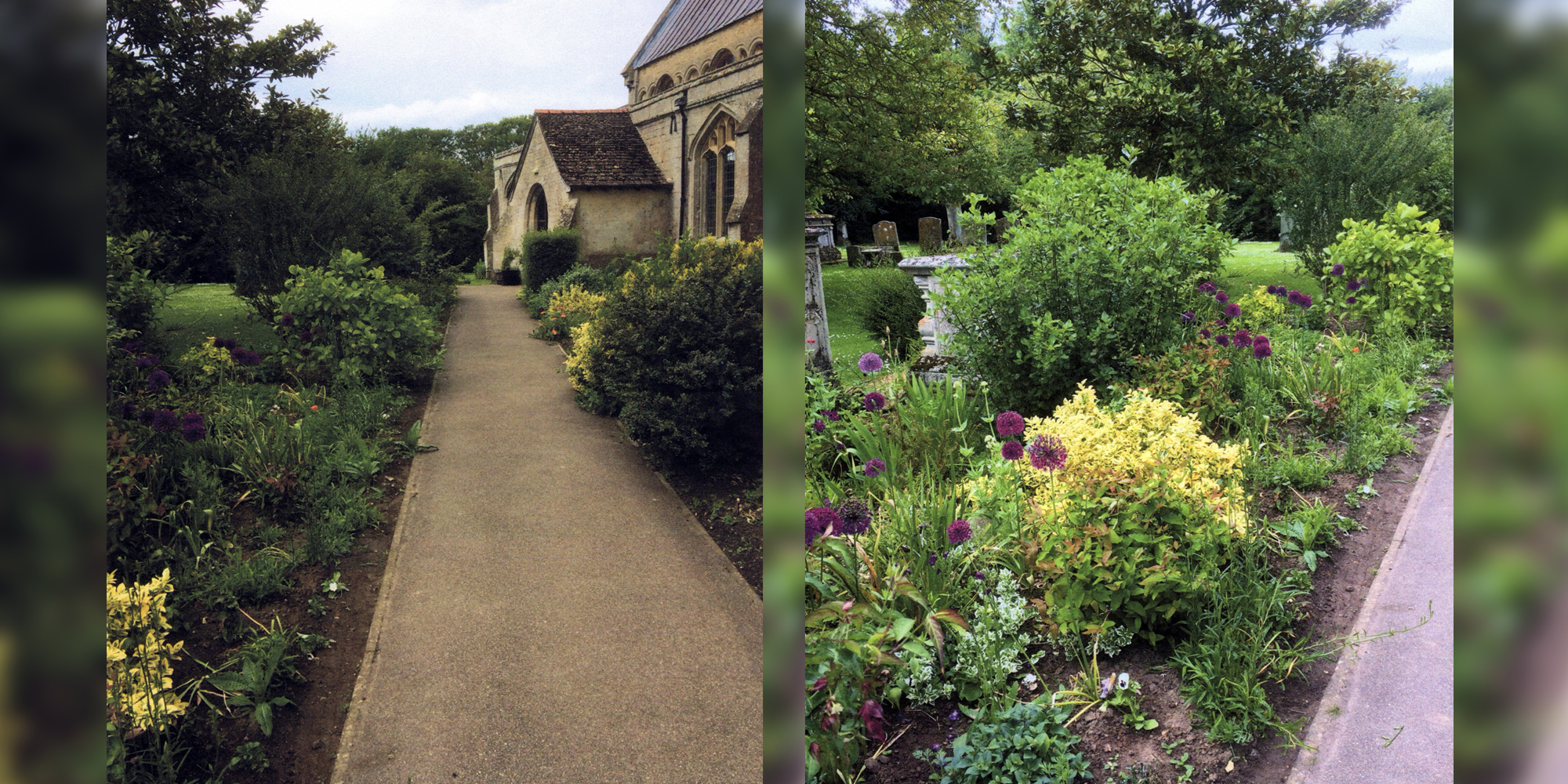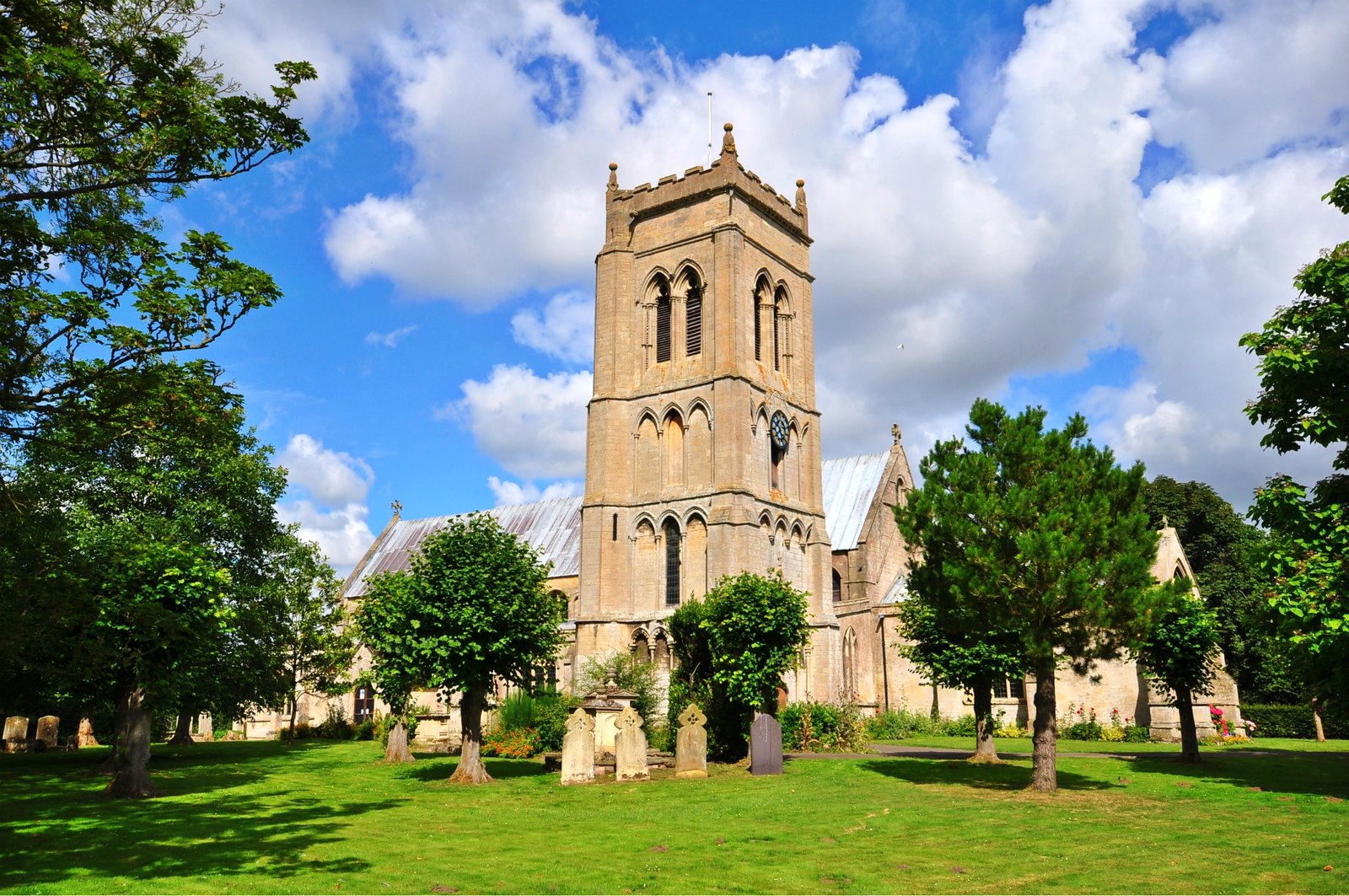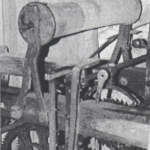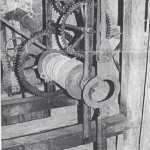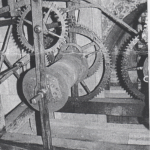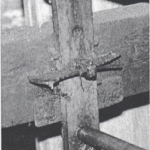The clock stands on an elevated platform on the first floor of the tower. Wooden steps allow access to the platform for winding and maintenance. The two photographs below show going train right, striking left.
Going train
Between the top horizontal wooden upper and lower bar. The large rope roller has been added. The original spiked bearing for a rope guide roller is to the right knocked into the top rail but now unused. A brass escape wheel has replaced the original which may have been wrought iron. New bushing has taken place in the front and rear wrought iron pivot bars and is now one up. The small photograph at the bottom shows an original wedge and spigot fixing on the top of the rear pivot bar. All fixings* would have been made in this way and no nuts and bolts would have been used on the original clock. The second wheel has been replaced in brass it has six spokes where all the other original wrought iron* wheels have four. The take off work and gears to the dial* hands has been added originally a single wrought iron arbor would have led from the end of the winding barrel to a single handed clock. Evidence of this can be seen in an ancient drawing showing a diamond shaped wooden dial* with one hand. The 10 foot long pendulum beats approximately two seconds allowing the escape wheel to turn once every 2 minutes. The bob is about 14 inches in diameter 30 lb. weight. The anchor and pendulum crutch have been modified. Winding takes place through a metal loop in the pendulum rod.
Striking train
All the original wheels have been retained. The count wheel has been modified by attaching a new plate to the side of the original counting slots. This is one of the most difficult parts of an ancient striking train to design and make. The original tapping plate would have had eleven slots only, with the first strike sensor for one strike of the bell in the first slot. The striking lever pivot and bracket have been replaced. The cringing barrels are made of wood* with metal end disks. The winding clicks are both horseshoe type using the spokes of the wheels for the non return device. Some of the wooden frame* has been replaced. The four horizontal bars are longer than normal this may have allowed for more working room. The two H type end frames may be original. Diagonal metal cross members have been added between these for extra strength. The clock would have once sat on a floor with the pendulum hanging through the floor to the chamber below. The original weights may have been made from stone hanging from hemp ropes. There are many similarities in the design to that of John Watts clockmaker at Stamford trading between 1680-1707. The only major difference being the length of the pendulum. The longest pendulum found to date on a John Watts clock is six feet. The approximate date of make at Whaplode 1695-1710 costing between £12-£25. All very similar parts to that of Watts are marked.
